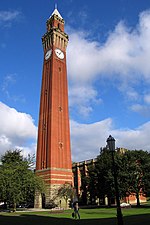Centre for International Education and Research

The Centre for International Education and Research (CIER) evolved in the 1950s, at the University of Birmingham UK, in the context of the involvement of British academics in the new international educational role of the United Nations. Within the philosophy of Global justice, research and teaching interests at CIER include: human security, extremism, conflict and emergencies, sustainable development and environmental justice; global citizenship, human rights, and democracy; marginalisation, street children, inclusion and special educational needs (SEN); international development, and university internationalisation. The Centre runs an ‘International Studies in Education’ programme, at Masters and PhD levels, reflecting the fields of International education and Comparative education, and the work of international organisations such as UNESCO and UNICEF. The Centre has worked with academics and students from most parts of the world, including Africa, South and East Asia, Europe, Middle East, and North and South America. Staff have carried out international research for academic and other organisations including the British Academy, British Council, Carnegie Foundation, CfBT, Council for Canadian Studies, Daiwa Angro Japanese Foundation, Department for International Development UK (DFID), Deutsche Bank, Economic and Social Research Council (ESRC), Esmée Fairbairn Foundation, European Commission, GTZ, Gulbenkian Foundation, Home Office, Japan Foundation, Joseph Rowntree Foundation, Oxfam, Sino-British Fellowship Trust, United States Department of Labor (USDoL), United Nations University (UNU), UNESCO and UNICEF.CIER is a member of the UNESCO Associated Schools Network, and Development Education Association. It helped to set up the British University in Dubai (BUID), and has formal links with Ontario Institute of Education (OISE), University of Toronto; Deshkal Society, Delhi; the Gambia Youth Movement for Peace and Unity in Africa; and the UNESCO Asia-Pacific Centre of Education for International Understanding (APCEIU) in Seoul.
Excerpt from the Wikipedia article Centre for International Education and Research (License: CC BY-SA 3.0, Authors, Images).Centre for International Education and Research
Richmond Hill Road, Birmingham Edgbaston
Geographical coordinates (GPS) Address Website Nearby Places Show on map
Geographical coordinates (GPS)
| Latitude | Longitude |
|---|---|
| N 52.4515 ° | E -1.9271 ° |
Address
University of Birmingham Edgbaston Campus
Richmond Hill Road
B15 3SA Birmingham, Edgbaston
England, United Kingdom
Open on Google Maps










